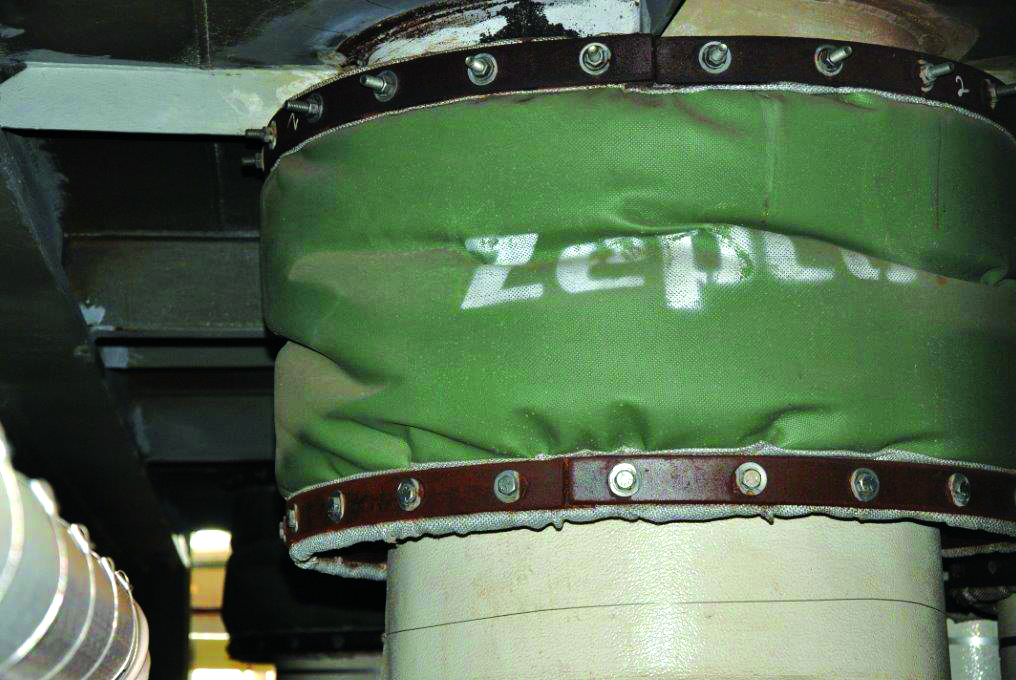In the world of industrial operations, where every degree of heat and every second of uptime matters, high temperature fabric expansion joints are not just components—they are critical safeguards. These joints make the difference between a plant running smoothly and one plagued by costly breakdowns. For industries like power generation, petrochemical refining, and metal processing, the ability to handle extreme heat while maintaining efficiency is non-negotiable. That is where Zepco LLC steps in, delivering solutions engineered for reliability, performance, and long-term durability.
Why High Temperature Fabric Expansion Joints Matter
Fabric expansion joints in general serve as flexible connectors, absorbing thermal movement, vibration, and misalignment within industrial systems. But high temperature fabric expansion joints take this functionality to another level. Built to withstand extreme environments—where gases and fluids can reach temperatures far beyond typical industrial ranges—these joints protect both equipment integrity and operational safety.
Unlike conventional alternatives, they are designed with:
- Advanced material layers that can handle continuous exposure to extreme heat.
- Flexibility that allows for thermal expansion and contraction without introducing stress into piping or ductwork.
- Resistance to degradation from chemical exposure, pressure fluctuations, and abrasive particulates often present in demanding industrial environments.
For engineers and operators responsible for critical infrastructure, these qualities mean reduced downtime, longer equipment life, and a safer working environment.
Key Applications Across Industries
The versatility of high temperature fabric expansion joints makes them essential across multiple heavy-duty sectors:
- Power Generation – Boilers, gas turbines, and exhaust systems depend on reliable joints to manage hot flue gases and continuous thermal cycling.
- Petrochemical Operations – Refineries and chemical plants require secure, heat-resistant connections in chimney ducts and process pipelines.
- Metal Processing Plants – Smelting and steel operations rely on fabric joints that can endure constant exposure to extreme furnaces and process heat.
- Incinerators & Waste Management – Flue gas ducts and emission systems demand joints that resist both high temperatures and corrosive byproducts.
In every case, the failure of a joint is more than an inconvenience—it can trigger unplanned shutdowns, costly repairs, or even regulatory penalties. That is why industries worldwide choose ZEPCO for dependable solutions.
Design Features That Define Reliability
The strength of ZEPCO’s high temperature fabric expansion joints lies in their engineering precision and high-performance materials. Every design reflects a deep understanding of the environments they serve. Key features include:
- Heat-resistant fabric composites capable of withstanding temperatures well above standard industrial thresholds.
- Structural reinforcement for durability under high pressure and wide temperature ranges.
- Leak-tight sealing systems to prevent emissions and maintain compliance with environmental regulations.
- Customizable configurations to fit seamlessly into complex duct and piping systems.
This isn’t a one-size-fits-all solution. ZEPCO specializes in tailoring every joint to the customer’s operating environment, ensuring maximum compatibility and performance.
ZEPCO’s Expertise and Commitment
What sets ZEPCO apart is not just the quality of its products, but its philosophy of partnership. High temperature fabric expansion joints are more than physical components—they represent a company’s operational continuity. ZEPCO supports its clients at every stage, from design and material selection to installation and ongoing maintenance.
- Customization – Every system is different, and ZEPCO engineers work closely with clients to design joints that meet specific thermal, chemical, and pressure requirements.
- Quality focus – Only the highest-grade materials are used, ensuring long service life even under relentless conditions.
- Lifecycle support – ZEPCO provides guidance on maintenance schedules, inspections, and replacements to minimize downtime and extend equipment longevity.
This hands-on expertise has earned ZEPCO a trusted reputation in industries where precision and reliability cannot be compromised.
Why Choose ZEPCO’s High-Temperature Solutions
When companies select ZEPCO’s high temperature fabric expansion joints, they gain more than components—they gain confidence. The advantages include:
- Extended durability in punishing environments.
- Improved efficiency through seamless handling of thermal expansion.
- Reduced maintenance costs and fewer unplanned shutdowns.
- Full compliance with industry standards and environmental regulations.
In a world where every operational decision impacts both profitability and safety, choosing ZEPCO means aligning with a partner who understands the stakes.
Final Thoughts
For power plants, refineries, and processing facilities operating at the limits of heat and pressure, investing in the right joint is not optional—it’s essential. High temperature fabric expansion joints from Zepco LLC are engineered to deliver the resilience and reliability these industries demand.
If you are seeking a solution tailored to your facility’s extreme conditions, ZEPCO is ready to deliver. Visit Zepco LLC’s website today to explore custom-engineered solutions designed to keep your systems safe, efficient, and built for the future.

